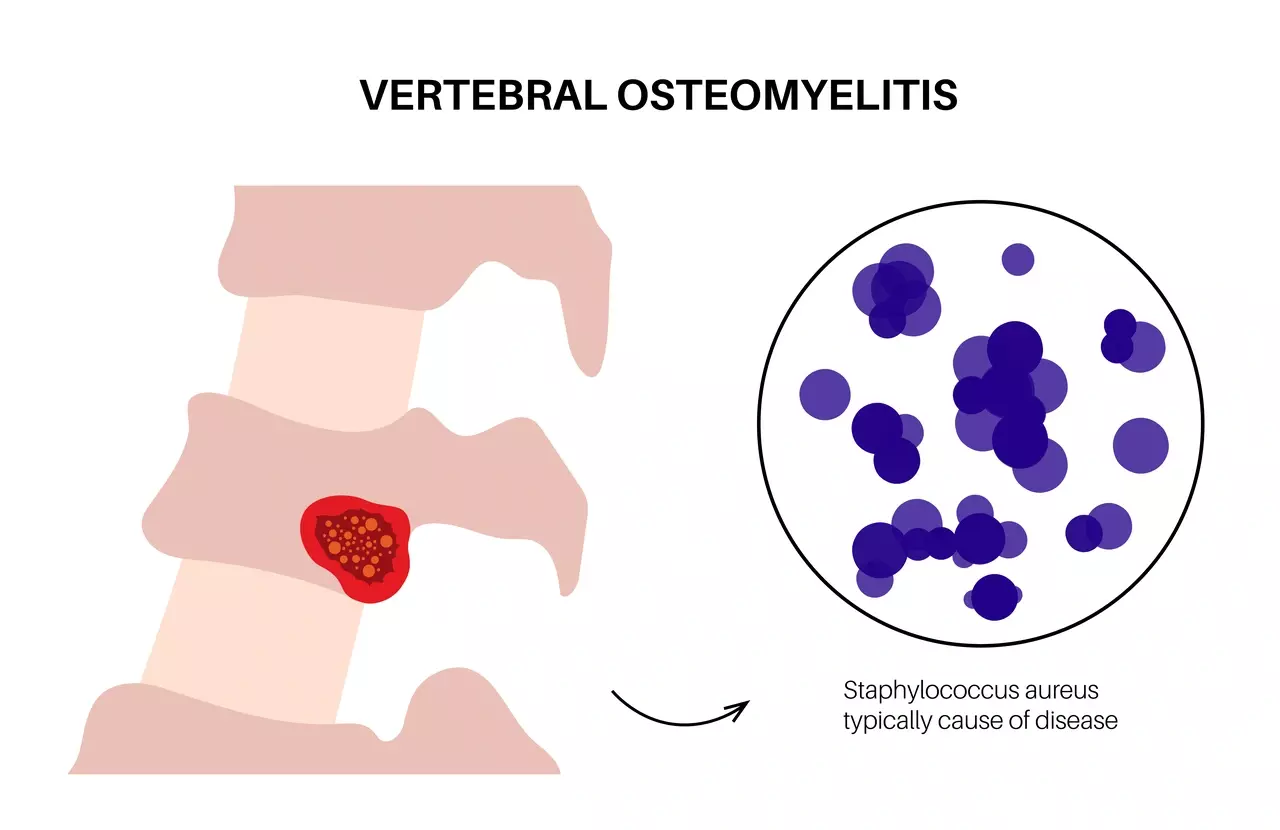Last Updated on November 27, 2025 by Bilal Hasdemir

Understanding brain cancer means looking at its stages and how they affect treatment. At Liv Hospital, we focus on the stages to help make treatment plans better and improve results.
A malignant brain tumor at stage 3, like anaplastic astrocytomas, is tough. The five-year survival rate is between 27-58%. We know each patient’s path is different, and many things can affect survival.
At Liv Hospital, we’re all in on top-notch healthcare. We use the latest medical methods to help our patients every step of the way.
Key Takeaways
- Stage 3 malignant brain tumors have a five-year survival rate of 27-58%.
- Liv Hospital is dedicated to providing advanced medical care for brain cancer patients.
- Understanding brain cancer stages is key for making treatment plans.
- Personalized care can greatly improve patient outcomes.
- Liv Hospital’s approach combines medical skill with caring support.
Understanding Brain Tumors and Staging Systems
Brain tumors come in different types and can be benign or malignant. Knowing their stages is key to choosing the right treatment. We’ll look at the types of brain tumors, the WHO grading system, and how brain cancer staging is different.
Types of Brain Tumors and Their Classifications
Brain tumors are grouped by the cell they start from. The main groups are gliomas, meningiomas, and schwannomas. Gliomas are split into astrocytomas, oligodendrogliomas, and ependymomas, each with its own traits and aggressiveness.
Astrocytomas start from astrocytes, a glial cell type. They vary from low-grade to high-grade. Meningiomas, which start from the meninges, are usually benign and grow slowly.
The WHO Grading System for Brain Tumors
The WHO grading system classifies brain tumors by how aggressive they are. Grades range from I (least aggressive) to IV (most aggressive). This system helps predict how the tumor will behave and what treatment is best.
- Grade I: Tumors are typically benign and slow-growing.
- Grade II: Tumors are relatively slow-growing but can invade surrounding tissue.
- Grade III: Tumors are malignant and grow more rapidly.
- Grade IV: Tumors are highly malignant and aggressive, with a high likelihood of recurrence.
How Brain Cancer Staging Differs from Other Cancers
Brain cancer staging is different from other cancers. Unlike many cancers, brain cancer staging focuses on the tumor’s type, grade, and how much of it was removed. This is because brain tumors rarely spread outside the brain.
Staging brain cancer is complex. It considers the tumor’s type, grade, and the patient’s health. Knowing these factors is essential for a good treatment plan.
Stage 3 Malignant Brain Tumor: Characteristics and Diagnosis
Knowing about stage 3 malignant brain tumors is key for diagnosis and treatment. These tumors grow fast and need a detailed plan to manage them well.
Defining Features of Stage 3 Brain Tumors
Stage 3 brain tumors grow quickly and spread into the brain tissue. They are malignant and have a WHO grade of III.
Their features include more cells, active cell division, and unusual cell shapes. These signs show the tumor is more aggressive than lower-grade ones.
Common Types of Stage 3 Brain Tumors
Anaplastic astrocytomas and anaplastic oligodendrogliomas are common stage 3 tumors. They grow fast and can get even worse.
| Tumor Type | Characteristics | Typical Treatment Approach |
|---|---|---|
| Anaplastic Astrocytoma | Highly malignant, rapid growth | Surgery, radiation therapy, chemotherapy |
| Anaplastic Oligodendroglioma | Aggressive, often with genetic mutations | Surgery, chemotherapy, radiation therapy |
Diagnostic Procedures and Imaging Techniques
Diagnosing stage 3 brain tumors involves clinical checks, imaging, and tissue analysis. MRI and CT scans help see the tumor’s size, location, and spread.
The diagnostic process is vital for figuring out the tumor type and grade. This helps decide the best treatment. A biopsy is often needed to get tissue for analysis.
By knowing about stage 3 malignant brain tumors and using the latest diagnostic tools, we can create treatment plans that meet each patient’s needs.
Comparing Brain Cancer Stages: From Stage 1 to Stage 4
Understanding brain cancer diagnosis means knowing the different stages. We’ll look at each stage, including their traits, chances of recovery, and treatment choices.
Stage 1 Brain Tumors: Characteristics and Prognosis
Stage 1 brain tumors grow slowly and are often not cancerous. They can usually be treated with surgery. Early detection is key to successful treatment.
Stage 2 Brain Tumors: Is Stage 2 Brain Tumor Curable?
Stage 2 tumors are less aggressive but may grow. Many people with stage 2 tumors can get better with the right treatment. Treatment options include surgery, radiation, or chemotherapy. The chance of curing stage 2 tumors depends on several factors.
Stage 3 vs. Stage 4 Brain Tumors: Key Differences
Stage 3 and stage 4 tumors are more serious. Stage 3 tumors are malignant and have more abnormal cells. Stage 4 tumors are the most aggressive and spread far. The main difference is how aggressive and spread out they are.
For more information on the deadliest cancers, including brain cancer, visit Understanding the Deadliest Cancers.
Progression Patterns Between Stages
How brain cancer progresses can vary a lot. Factors like tumor type, genetic changes, and treatment response play a big role. Knowing these patterns helps in planning treatment.
Here’s a comparison of the different stages of brain cancer:
| Stage | Characteristics | Prognosis | Treatment Options |
|---|---|---|---|
| Stage 1 | Slow-growing, often benign | Favorable | Surgery |
| Stage 2 | Low-grade, potentially curable | Generally good | Surgery, radiation, chemotherapy |
| Stage 3 | Malignant, higher-grade | Guarded | Multimodal treatment |
| Stage 4 | Aggressive, often with distant spread | Poor | Palliative care, clinical trials |
Knowing about brain cancer stages is key to making treatment choices. By comparing each stage’s traits, chances, and treatments, patients and doctors can plan the best care.
Survival Rates and Prognosis Factors for Stage 3 Brain Cancer
Knowing the survival rates for stage 3 brain cancer is key for patients and their families. It helps them understand their treatment options. The prognosis can change a lot based on the tumor type, location, and the patient’s health.
Five-Year Survival Statistics for Stage 3 Astrocytomas
The five-year survival rate for stage 3 astrocytomas is between 27% and 58%. This range comes from different tumor types, patient ages, and treatments. We need to look at these numbers with each patient’s unique situation and the newest treatments.
Factors Affecting Survival Rates
Many things can change a patient’s survival chances for stage 3 brain cancer:
- Tumor Size and Location: Bigger tumors or those in key areas might have a worse outlook.
- Patient’s Age and Health: Younger patients with fewer health issues usually do better.
- Treatment Response: How well the first treatment works and managing any return of the cancer are key.
- Genetic Mutations: Some genetic markers can change how the tumor grows and reacts to treatment.
Comparing Survival Rates Across Different Brain Cancer Stages
Survival rates for brain cancer change a lot with each stage. For example:
| Brain Cancer Stage | Typical Five-Year Survival Rate |
|---|---|
| Stage 1 | 75% – 90% |
| Stage 3 | 27% – 58% (for astrocytomas) |
| Stage 4 | 5% – 20% |
These comparisons show why catching cancer early is so important. They also stress the need for treatments tailored to each patient.
Treatment Approaches for Stage 3 Malignant Brain Tumors
Dealing with stage 3 malignant brain tumors needs a detailed treatment plan. We know each patient is different. So, we tailor treatments to meet their specific needs.
Surgical Interventions and Their Limitations
Surgery is often the first step for stage 3 brain tumors. The main goal is to remove as much of the tumor as possible without harming the brain. But, surgery can be tricky, mainly when the tumor is in a sensitive or hard-to-reach spot.
We look at the tumor’s location, size, and the patient’s health to decide if surgery is possible.
Radiation Therapy Protocols
Radiation therapy is key for treating stage 3 brain tumors. High-energy beams target and kill cancer cells. The type of radiation therapy can vary, with some getting external beam radiation therapy (EBRT) or stereotactic radiosurgery (SRS).
We team up with radiation oncologists to create a plan. This plan aims to make radiation therapy as effective as possible while reducing side effects.
Chemotherapy Options and Effectiveness
Chemotherapy is another treatment for stage 3 brain cancer. The choice of chemotherapy depends on the tumor type and the patient’s health. We look at different options, like temozolomide, which is often used for certain brain tumors.
Emerging Treatments and Clinical Trials
We also explore new treatments and clinical trials for stage 3 brain tumors. These include targeted therapy, immunotherapy, and other new methods.
| Treatment Approach | Description | Potential Benefits |
|---|---|---|
| Surgery | Removal of as much of the tumor as possible | Reduces tumor size, alleviates symptoms |
| Radiation Therapy | High-energy beams target cancer cells | Kills cancer cells, slows tumor growth |
| Chemotherapy | Medications target cancer cells | Slows tumor growth, may shrink tumor |
Treatment Outcomes: Stage 3 vs. Other Brain Cancer Stages
Looking at treatment results for different brain cancer stages shows us a lot. It helps us see how well treatments work. Knowing how Stage 3 compares to other stages is key for both patients and doctors.
Response Rates to Treatment by Stage
Treatment results change a lot with each stage of brain cancer. For Stage 3 tumors, the success rate is often lower than in earlier stages. Here’s what we’ve seen:
- Stages 1 and 2 tumors usually do better with treatment because they’re smaller and less aggressive.
- Stage 3 tumors have a moderate success rate. It depends on the tumor type, the patient’s age, and overall health.
- Stage 4 tumors have the worst success rates because they’re very advanced and aggressive.
Recurrence Patterns and Management
How often tumors come back also changes with the stage. We’ve noticed that:
- Stages 1 and 2 tend to have lower rates of coming back if treated right.
- Stage 3 tumors are more likely to come back, so they need closer watching and sometimes stronger treatments.
- Dealing with tumors that come back involves a team effort. This includes surgery, new radiation methods, and special chemotherapy.
Long-term Treatment Effects and Complications
Long-term side effects and problems are big concerns for brain cancer patients at all stages. We’ve found that:
- People with Stage 3 brain cancer might face long-term issues like memory problems, nerve damage, and tiredness.
- The chance of lasting side effects depends on the treatment type and intensity, and the patient’s health.
- Managing these side effects well needs a care plan that covers physical, emotional, and mental health needs.
By knowing how different stages of brain cancer respond to treatment, we can tailor care better. This improves care and life quality for patients.
Quality of Life Considerations for Brain Cancer Patients
Brain cancer and its treatment can greatly affect a patient’s life. It can cause changes in the brain, thinking, and mood. When dealing with stage 3 malignant brain tumors, it’s key to focus on these areas for full care.
Neurological and Cognitive Impacts
Brain cancer and its treatment can lead to big changes in the brain and thinking. Symptoms may include memory loss, trouble focusing, and changes in personality. These can happen because of the tumor or from treatments like surgery, radiation, and chemotherapy.
Every patient reacts differently to brain cancer and its treatment. Some may have small thinking changes, while others may have big brain problems. Knowing these possible effects helps us create better support plans.
Physical Limitations and Symptom Management
Brain cancer patients often face physical challenges and symptoms. Common issues include tiredness, seizures, and problems with movement. Managing symptoms well is important for a better life quality.
- Medications can help control seizures and reduce tumor swelling.
- Rehabilitation therapies, like physical and occupational therapy, help regain lost abilities.
- Palliative care teams help manage symptoms and improve comfort.
Psychological Support and Mental Health
The mental impact of brain cancer should not be ignored. Patients often feel anxious, depressed, and worried about their future. It’s vital to offer psychological support to help them deal with their diagnosis and treatment.
We stress the need for a team that includes mental health experts. Support groups, counseling, and therapy give patients the tools to handle their mental health. By focusing on the mental side of brain cancer, we can make patients’ lives better.
Advances in Brain Tumor Research and Multidisciplinary Care
Research on brain tumors has improved patient care and our understanding of the disease. We now manage brain tumors better, thanks to new research and team care.
Recent Breakthroughs in Brain Tumor Treatment
New treatments like targeted and immunotherapies are showing great promise. Targeted therapy uses drugs that only attack cancer cells, protecting healthy ones. Immunotherapy uses the body’s immune system to fight cancer.
| Treatment Type | Description | Benefits |
|---|---|---|
| Targeted Therapy | Drugs that target specific cancer cells | Reduced harm to healthy cells, fewer side effects |
| Immunotherapy | Treatments that utilize the immune system | Enhanced immune response against cancer cells |
The Importance of Specialized Brain Tumor Centers
Specialized centers are key for full care. They have teams of experts like neurosurgeons and oncologists. This team work means patients get care that fits their needs.
Multidisciplinary Approach to Brain Cancer Management
Managing brain cancer needs a team effort. This means doctors and specialists working together. It leads to better care and a better life for patients.
By combining new research with team care, we can do better in treating brain tumors. This approach helps patients and improves their care journey.
Conclusion: Navigating a Stage 3 Brain Tumor Diagnosis
Getting a stage 3 brain tumor diagnosis is tough and emotional. It’s important to know what stage 3 brain tumors are, the treatment options, and the chances of recovery. This knowledge helps in making the right choices for care.
At Liv Hospital, we focus on top-notch healthcare for patients from around the world, including those with brain cancer. Our team creates custom treatment plans for each patient. This ensures they get the best care and support during their journey.
When you find out you have a stage 3 brain tumor, you need quick and effective treatment. We use the newest medical tech and methods to help our patients. Choosing Liv Hospital means getting the best care and support to deal with brain cancer diagnosis and treatment.
FAQ
What is the prognosis for a stage 3 malignant brain tumor?
The outlook for a stage 3 malignant brain tumor depends on several factors. These include the tumor’s type, size, location, and the patient’s overall health. Generally, these tumors are aggressive and need a thorough treatment plan.
How does brain cancer staging differ from other types of cancer?
Brain cancer staging is unique. It focuses on the tumor’s grade and type, unlike the TNM system used for many cancers. The World Health Organization (WHO) grading system is often used for brain tumors.
What are the common types of stage 3 brain tumors?
Stage 3 brain tumors are usually high-grade gliomas. Anaplastic astrocytomas are a common type. These tumors are aggressive and need immediate treatment.
What diagnostic procedures are used to identify stage 3 brain tumors?
To identify stage 3 brain tumors, doctors use imaging like MRI and CT scans. They also perform biopsies to determine the tumor’s type and grade.
How do treatment approaches vary for stage 3 malignant brain tumors?
Treatment for stage 3 malignant brain tumors often combines surgery, radiation, and chemotherapy. New treatments and clinical trials may also be options.
What are the survival rates for stage 3 brain cancer?
Survival rates for stage 3 brain cancer depend on the tumor type and patient health. Five-year survival statistics for stage 3 astrocytomas give insight into the prognosis.
How does the quality of life change for brain cancer patients?
Brain cancer and its treatment can affect neurological and cognitive function, physical abilities, and mental health. It’s important to have a care plan that includes psychological support and symptom management to maintain quality of life.
What recent advances have been made in brain tumor research and treatment?
Recent breakthroughs include new surgical techniques, targeted therapies, and immunotherapies. Specialized centers and a team approach have improved patient outcomes.
What is the importance of a multidisciplinary approach to brain cancer management?
A team approach, involving neurosurgeons, oncologists, and radiologists, ensures complete care for brain cancer patients. It addresses their complex needs and improves outcomes.
How can patients navigate a stage 3 brain tumor diagnosis?
Understanding the diagnosis, treatment options, and prognosis is key. Patients should work closely with their healthcare team to create a personalized care plan.








